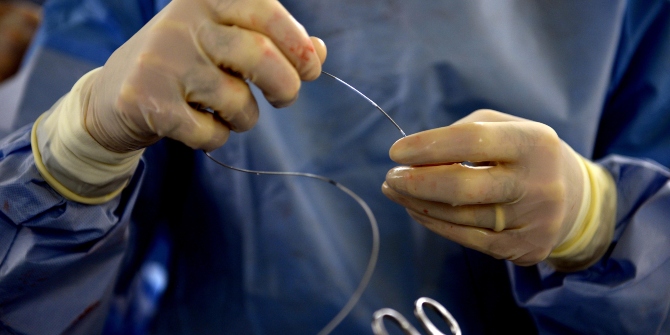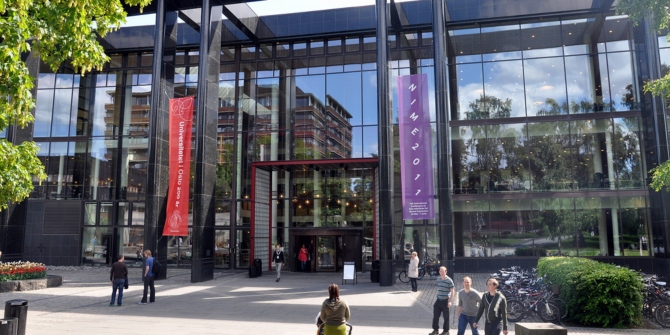By Andrea Alunni
April 26th is the World Intellectual Property Day with the theme Green Future. There will not be any organised physical events and the World IP Day community will move celebrations to virtual channels. The Covid-19 crisis seems to have highjacked both the event and the theme that was decided months ahead of the date. Well, only apparently… In fact, the two subjects are linked and the coming date is an opportunity to reflect on how intellectual property can help us fight and prevent crises like the current one.
The last European Patent Office Patent Index 2019 report, published recently, shows a growing trend in patent applications. The EPO received over 181 000 applications last year, 4% more than in 2018 and a new all-time high. However, a study by the European Commission says that currently in Europe 95% of the patents granted (around three million) are dormant.
Yet, the effective utilisation of 5% of the European patent portfolio brings a contribution of 42% (or 5.7 trillion euros) to the European GDP. Besides, 90% of European trade with the rest of the world originates from IP rights-intensive industries and the resulting 82 million jobs – both direct and indirect – are marked by the prevalence of higher than average wages.
Hence, there is a great opportunity at the moment to leverage the commercialisation of intellectual property rights into technology transfer for the benefit of all. We have a chance now to see how we can empower users to make better use of intellectual property, and to build products that help them prosper and grow based on new opportunities. In turn, of course, this would support a richer economy and help tackle recurrent crises.
Now imagine just how much higher the effective utilisation figures could be if we could help inventors achieve the full commercial power of their intellectual property rights. There is much to gain for innovators. There is much to gain for the world, as a whole. We need more technology transfer.
Technology transfer has become central in recent university evolution and has gained remarkable importance in terms of both the challenges and opportunities it presents to the life-long effort of individual inventors in finding suitable solutions to problems for the progress of societies. It is a complex process that works in an unconventional timeframe and at a high level of uncertainty. A successful technology transfer process requires strong research to generate a sound intellectual property portfolio, a dedicated Technology Transfer Office as a meeting point of science and business, a team of highly skilled technology transfer managers who understand the languages of science and business, and a surrounding entrepreneurial ecosystem capable of absorbing innovation and of providing ancillary services.
In order to thrive in innovation, universities need to be equally ambitious both in in achieving excellence in teaching and research, and in technology transfer. This means placing much greater emphasis on extracting value from intellectual property.
Imagine we had done so in the last decade for the development of vaccines to fight infectious diseases – at this juncture, just a few adjustments would have led to several options or solutions. The same could be reasonably said about the fight against global warming: there are hundreds of filed patents with solutions to be developed and brought to the market for the benefit of society. To achieve this growth scenario, a vibrant culture of technology and innovation is required to drive economic success sustained by research. Such a move would naturally attract the best and most creative inventors, entrepreneurs, researchers, students and academics of excellence to work together.
What is also needed is more proof-of-concept funding for prototyping to accelerate the commercialisation of innovations out of the university and into the marketplace by providing money to novel, early-stage research that most often would not be funded by any other conventional source. In connection with this, a point that has often been debated in the literature is whether it is more important to allow VCs to pick the best early-stage technology for further development or to allow a university to develop internal funds to shape the pipeline for progressing investment opportunities. This public and private investment approaches dilemma leads to a funding gap, with early-stage companies suffering most.
Public and private sectors together have a visionary role to play in imagining and shaping the future of innovation funding. Yet, lack of funding is often a limitation for innovation, as frequently public intervention replicates private investment approaches, looking for “winners” rather than helping to build the cohort of progressing technologies to be tested in crucial proof of concept experiments.
In conclusion, how can we all help fight the coronavirus crisis and prevent new crises, knowing that technology transfer could bring us a solution? First, we should create a powerful technology transfer ecosystem to support university research, inventors and SMEs. Second, make sure that very early-stage innovation finance is available by both public and private sectors, to help the technology transfer process to prove the concept of new ideas that are only defined embryonically in scientific papers or initial intellectual property filings.
♣♣♣
Notes:
- This blog post expresses the views of its author(s), not the position of LSE Business Review or the London School of Economics.
- Featured image by Daniel Foster, under a CC-BY-NC-SA-2.0 licence
- When you leave a comment, you’re agreeing to our Comment Policy






Could you share the source for this statistic “However, a study by the European Commission says that currently in Europe 95% of the patents granted (around three million) are dormant.”?